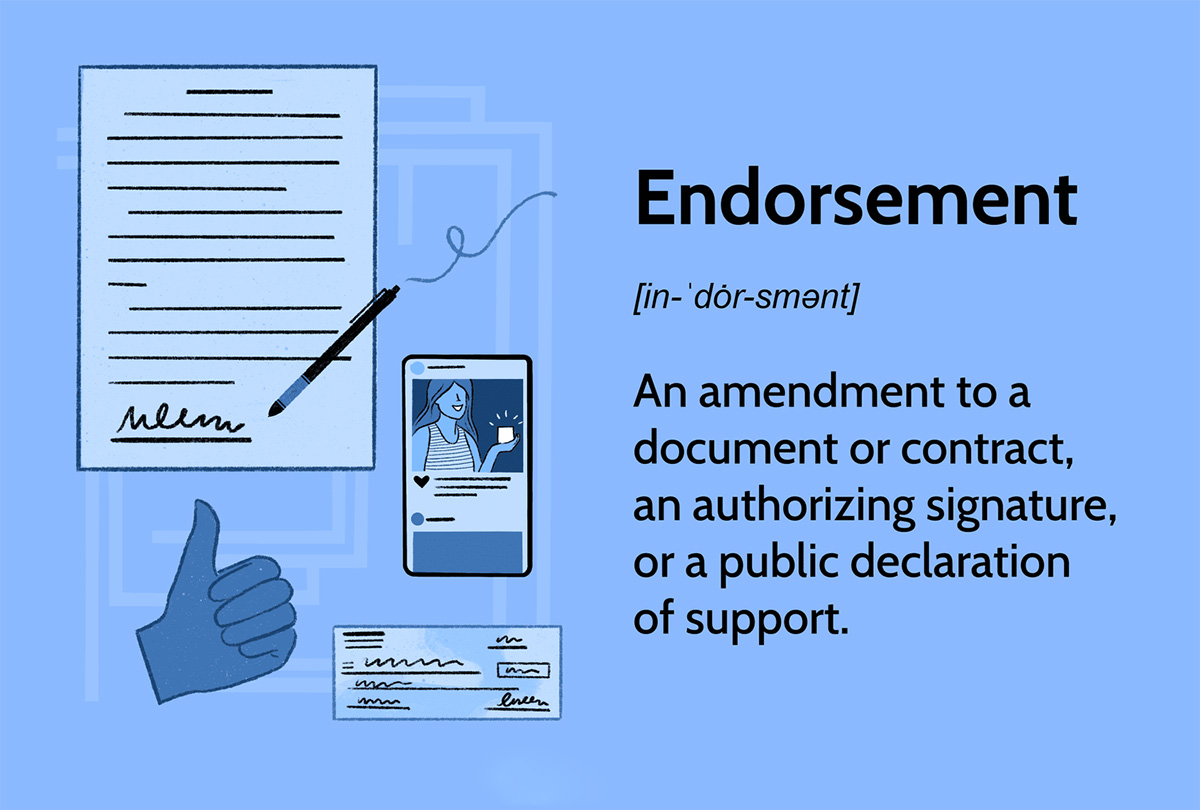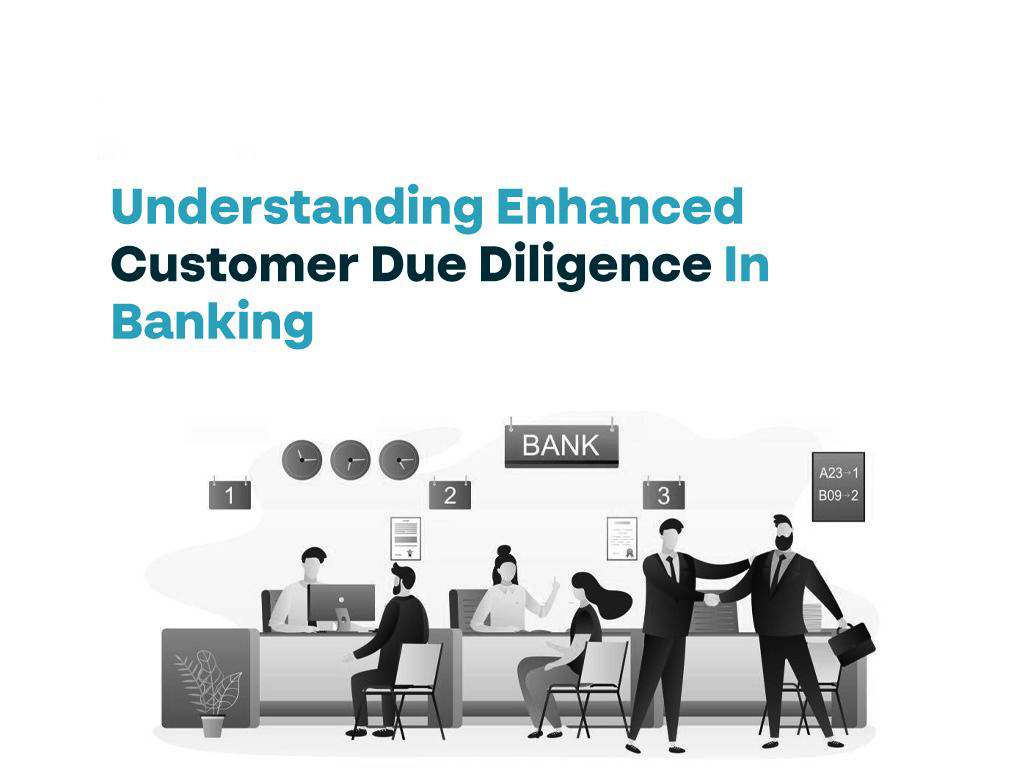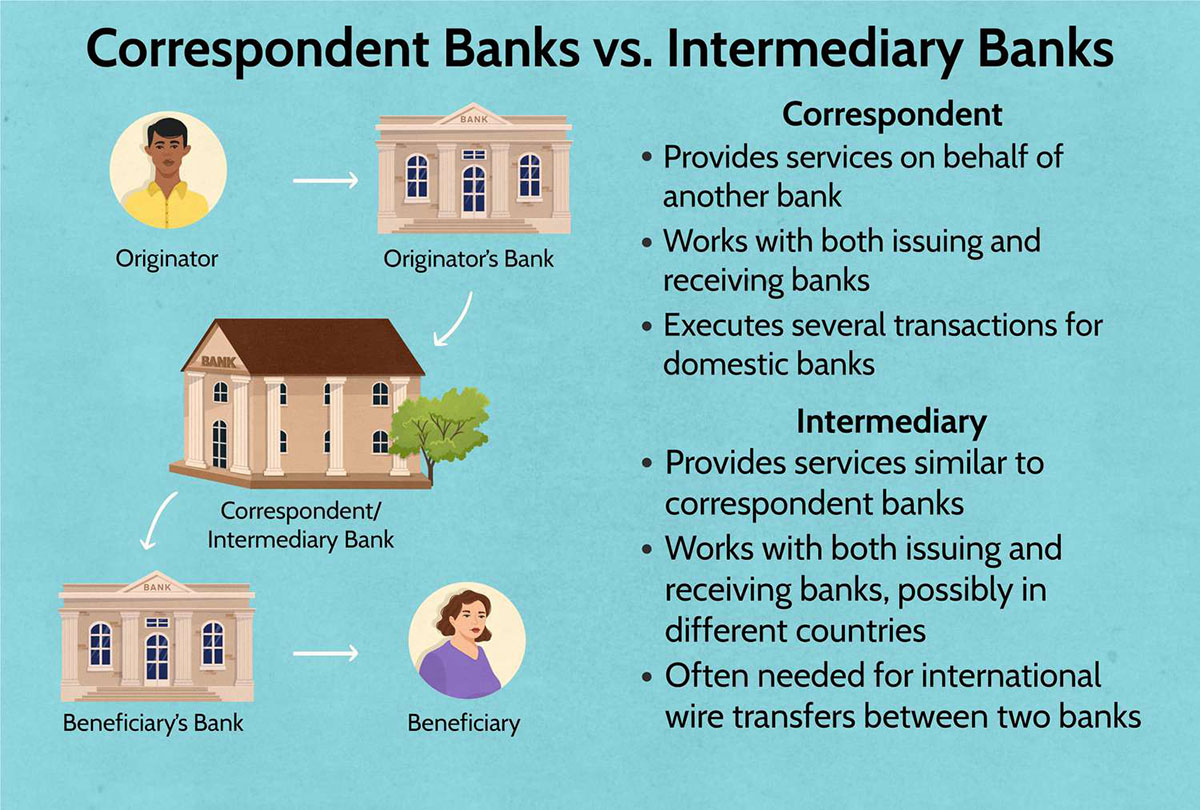

Finance
What Is ESG In Banking
Published: October 11, 2023
Discover the significance of ESG in banking and its impact on the finance industry. Explore the role of sustainability and responsible investing in shaping the future of finance.
(Many of the links in this article redirect to a specific reviewed product. Your purchase of these products through affiliate links helps to generate commission for LiveWell, at no extra cost. Learn more)
Table of Contents
Introduction
ESG (Environmental, Social, and Governance) has become a key focus in the financial sector, including banking. In an era where sustainability and responsible practices are gaining momentum, banks are recognizing the importance of integrating ESG factors into their operations. ESG criteria gauge a company’s performance in areas such as environmental impact, social responsibility, and corporate governance.
The concept of ESG in banking goes beyond the traditional role of financial institutions. It recognizes that banks have a broader impact on society and the environment beyond their financial transactions. Incorporating ESG into banking practices allows financial institutions to align their core values with the demands of consumers, investors, and regulators.
With climate change concerns, social inequality, and ethical business practices taking center stage, banks are realizing that ESG factors are not just nice-to-have considerations, but crucial drivers of long-term value and risk mitigation. By assessing ESG factors, banks can identify and mitigate potential risks while capitalizing on new business opportunities.
This article explores the concept of ESG in banking, its importance, challenges, and the regulatory framework governing it. It also highlights the benefits of integrating ESG factors into banking operations, paving the way for a more sustainable and responsible financial sector.
Buckle up as we delve into the world of ESG in banking and discover how it is transforming the financial landscape.
Definition of ESG
ESG stands for Environmental, Social, and Governance. Each component represents a different aspect of sustainable and responsible business practices. Let’s explore each element in more detail:
- Environmental: The environmental aspect of ESG focuses on the impact of a company’s activities on the planet. This includes assessing factors such as energy consumption, greenhouse gas emissions, waste management, water usage, and biodiversity conservation. Companies that prioritize environmental sustainability strive to minimize their carbon footprint and implement eco-friendly practices.
- Social: The social aspect of ESG refers to a company’s impact on society. It encompasses factors such as labor practices, supply chain management, employee relations, community engagement, and diversity and inclusion. Socially responsible companies prioritize fair treatment of employees, support local communities, and embrace diversity and equality.
- Governance: Governance refers to the systems and processes that govern a company’s operations and ensure accountability. It includes aspects such as board structure, executive compensation, risk management, transparency, and ethical standards. Strong corporate governance ensures that companies are managed with integrity and in the best interests of all stakeholders.
ESG factors complement financial metrics, providing a broader perspective on a company’s overall performance. Investors and stakeholders are increasingly considering ESG criteria when making investment decisions, as it serves as an indicator of a company’s sustainability and long-term viability.
ESG is not a static concept; it continues to evolve as societal and environmental concerns evolve. Companies that proactively address ESG issues are better positioned to adapt to changing regulatory landscapes, attract capital, and build trust with stakeholders.
Now that we have a clear understanding of the three components that make up ESG, let’s explore why ESG is gaining significance in the banking sector.
Importance of ESG in Banking
The importance of ESG in banking cannot be overstated. Here are some key reasons why ESG has become a priority for banks:
- Risk Mitigation: Integrating ESG factors into banking practices helps institutions identify and mitigate potential risks. Environmental risks, such as climate change-induced disasters, can have severe financial implications. Social risks, such as lawsuits related to human rights violations, can damage a bank’s reputation. Governance risks, such as fraud or corruption, can lead to financial losses. By considering ESG factors, banks can anticipate and address these risks more effectively.
- Enhanced Reputation: Banks that demonstrate a commitment to sustainable and responsible practices can enhance their reputation and build trust with customers, investors, and regulators. As public awareness of environmental and social issues grows, consumers are increasingly choosing to align themselves with ethically conscious institutions. By implementing ESG initiatives, banks can attract and retain customers who prioritize sustainability and responsible banking practices.
- Access to Capital: ESG considerations are playing an increasingly important role in investment decisions. Investors, including institutional investors and asset managers, are factoring in ESG performance when allocating capital. Banks that incorporate ESG into their operations are more likely to attract capital from socially responsible investors. Moreover, several sustainable finance initiatives and green bonds are emerging, offering opportunities for banks to finance environmentally and socially beneficial projects.
- Regulatory Compliance: Regulators worldwide are paying closer attention to ESG issues, with some mandating ESG reporting and disclosure. Banks that are proactive in addressing ESG concerns are better positioned to meet regulatory requirements, avoiding potential penalties and reputational damage. Regulatory frameworks are evolving to incorporate ESG considerations, and banks need to ensure compliance to remain competitive in the changing regulatory landscape.
- Long-Term Value Creation: By integrating ESG factors, banks can identify new business opportunities aligned with sustainability trends. For example, banks can support loan and investment products focused on renewable energy, clean technology, or affordable housing. Embracing ESG factors enables banks to contribute to a more sustainable future while generating long-term value for shareholders.
The importance of ESG in banking is not limited to the factors mentioned here; it extends to various aspects of a bank’s operations. As customer expectations, regulatory frameworks, and market dynamics continue to evolve, ESG will increasingly shape the future of the banking industry.
Integration of ESG Factors in Banking
The integration of ESG factors in banking involves incorporating environmental, social, and governance considerations into various aspects of a bank’s operations and decision-making processes. Here are some key areas where ESG integration is taking place:
- Lending and Investment Decisions: Banks are integrating ESG factors into their lending and investment decisions. They assess the environmental and social risks associated with potential borrowers and investments to ensure alignment with sustainability goals. This includes evaluating the carbon footprint of projects, considering social impact assessments, and promoting investments in sustainable sectors such as renewable energy and clean technology.
- Risk Management: ESG factors are increasingly incorporated into banks’ risk management frameworks. This involves identifying and assessing ESG risks, such as climate-related risks, reputational risks, and compliance risks. Banks develop strategies to mitigate these risks and ensure the long-term viability of their operations.
- Corporate Governance: ESG integration emphasizes the importance of strong corporate governance practices. Banks are focusing on board diversity, transparency, accountability, and ethical conduct to ensure responsible decision-making and protect the interests of shareholders and stakeholders.
- Product Development: Banks are developing new financial products and services aligned with ESG principles. This includes green financing options, sustainable investment funds, and impact investing products. By offering these products, banks provide customers with opportunities to support environmentally and socially responsible initiatives.
- Supply Chain Management: Banks are extending their ESG focus to their supply chains. They assess their vendors’ ESG performance, ensuring alignment with their sustainability objectives. By promoting responsible sourcing practices, banks can influence positive change throughout the supply chain.
- Stakeholder Engagement: ESG integration involves engaging with stakeholders, including customers, employees, regulators, and communities. Banks are actively seeking input from stakeholders to understand their concerns and expectations regarding ESG issues. This enables banks to respond effectively to stakeholder needs and build stronger relationships.
Integration of ESG factors requires a systematic and comprehensive approach. Banks are incorporating ESG into their overall strategies, through policies, metrics, reporting frameworks, and performance tracking. This ensures that ESG considerations are not treated as a mere tick-box exercise but are deeply embedded in the bank’s culture and decision-making processes.
By integrating ESG factors into their operations, banks demonstrate their commitment to responsible banking practices and contribute to sustainable economic development.
Benefits of ESG Integration in Banking
The integration of ESG (Environmental, Social, and Governance) factors in banking offers numerous benefits to both financial institutions and society as a whole. Let’s explore some key advantages of ESG integration:
- Risk Mitigation: By considering ESG factors in their operations, banks can identify and mitigate potential risks. Environmental risks, such as climate change and natural disasters, can have significant financial implications. Social risks, such as labor disputes or human rights violations, can harm a bank’s reputation. Governance risks, such as fraudulent activities, can result in financial losses. ESG integration allows banks to anticipate and address these risks more effectively, reducing financial vulnerabilities.
- Enhanced Reputation: ESG integration helps banks build a positive reputation as socially responsible institutions. By adopting sustainable and responsible practices, banks demonstrate their commitment to environmental stewardship, social inclusion, and ethical governance. This improves their brand image, attracts customers who prioritize sustainability, and enhances long-term customer loyalty.
- Access to Capital: Incorporating ESG factors can open doors to new sources of capital. Investors, particularly institutional investors and asset managers, are increasingly considering ESG performance when making investment decisions. Banks that prioritize ESG integration are more likely to attract socially responsible investment funds. They can tap into sustainable finance initiatives and participate in the growing market for green bonds, enabling them to finance environmentally and socially beneficial projects.
- Business Opportunities: ESG integration creates opportunities for banks to develop innovative products and services. They can launch green financing options, sustainable investment funds, and impact investment products that align with ESG criteria. By catering to the increasing demand for sustainable finance, banks can capture new market segments and drive business growth.
- Long-Term Value Creation: ESG integration enables banks to pursue long-term value creation while contributing to global sustainable development goals. By aligning their operations with ESG principles, banks can identify business opportunities in emerging sectors such as renewable energy, clean technology, and green infrastructure. These investments not only generate financial returns but also support a transition to a low-carbon and more inclusive economy.
- Resilience and Adaptability: ESG integration allows banks to adapt to evolving regulatory landscapes and market trends. By proactively addressing ESG concerns, banks can remain compliant with changing regulations and mitigate potential legal and reputational risks. They can also stay ahead of shifting consumer preferences, positioning themselves as leaders in responsible banking.
Overall, ESG integration in banking goes beyond mere compliance. It aligns financial institutions with the values and expectations of their stakeholders, promotes sustainable economic growth, and ensures the long-term viability of the banking sector.
Challenges in Implementing ESG in Banking
While the integration of ESG (Environmental, Social, and Governance) factors in banking offers numerous benefits, there are also challenges that financial institutions face when implementing ESG practices. Some of the key challenges include:
- Data Availability and Quality: One of the primary challenges in implementing ESG in banking is the availability and reliability of relevant data. ESG data, particularly in emerging markets, can be limited or inconsistent. Banks may struggle to access accurate and comprehensive data on environmental impact, social performance, and governance practices. Improving data collection, standardization, and reporting processes is crucial to address this challenge.
- Complexity of ESG Frameworks: ESG frameworks and standards are rapidly evolving, creating complexity for banks trying to align their practices. Numerous frameworks, such as the Global Reporting Initiative (GRI), Sustainability Accounting Standards Board (SASB), and Task Force on Climate-Related Financial Disclosures (TCFD), offer different guidelines and reporting requirements. Banks need to navigate these frameworks effectively and determine which ones are most relevant to their business and stakeholders.
- Measuring and Quantifying ESG Impact: Assessing and quantifying the impact of ESG practices can be challenging. Traditional financial metrics often struggle to capture the long-term value generated through ESG integration. Banks need reliable methodologies and tools to measure the environmental, social, and financial outcomes of sustainability initiatives. Developing robust impact measurement frameworks is essential to effectively communicate the value of ESG integration to stakeholders.
- Integration into Decision-Making Processes: Effectively integrating ESG into decision-making processes can be a significant challenge for banks. Many financial institutions still primarily rely on traditional financial metrics when evaluating investment opportunities and risk assessments. Shifting to a holistic approach that incorporates ESG considerations requires aligning internal processes, data systems, and training programs to ensure a consistent ESG lens is applied throughout the organization.
- Changing Organizational Culture: Implementing ESG requires a cultural shift within banks. Embracing sustainability and responsible practices involves mindset changes, employee education, and fostering a culture that values ESG integration. Banks need to engage and empower employees at all levels to drive the adoption of ESG practices throughout the organization.
- Costs and Resource Allocation: Integrating ESG practices may require investing in new technologies, data systems, and human resources. This could pose financial challenges for some banks, particularly smaller institutions with limited resources. Allocating sufficient resources and budgeting appropriately is key to overcoming this challenge and ensuring a successful ESG integration process.
Despite these challenges, banks are increasingly recognizing the importance of ESG integration and are actively working to overcome these hurdles. Collaboration amongst industry peers, regulatory support, and continuous improvement of ESG frameworks will help address the challenges and drive the implementation of sustainable and responsible practices in the banking sector.
ESG Reporting and Transparency in Banking
ESG (Environmental, Social, and Governance) reporting and transparency are critical components of ESG integration in banking. They involve disclosing relevant information about a bank’s ESG performance, strategies, and impacts. Here’s an overview of ESG reporting and transparency in the banking sector:
Voluntary and Mandatory Reporting: ESG reporting in banking can be both voluntary and mandatory. While some banks voluntarily disclose ESG-related information to showcase their commitment to sustainability and responsible practices, regulatory bodies in certain jurisdictions are increasingly demanding mandatory ESG disclosures. These regulations aim to improve transparency and comparability in ESG reporting, allowing stakeholders to make more informed decisions.
Key ESG Disclosures: ESG reporting in banking typically covers a wide range of topics. Key ESG disclosures may include:
- Environmental Disclosures: Banks report on their environmental impact, including energy consumption, greenhouse gas emissions, waste management, and water usage. They may also disclose efforts to manage climate-related risks and support sustainable initiatives.
- Social Disclosures: Banks provide information on their social performance, which may include labor practices, human rights, diversity and inclusion, community engagement, and customer privacy. They may also highlight initiatives that promote financial inclusion and support local communities.
- Governance Disclosures: Banks report on their governance practices, including board structure, executive compensation, risk management, and ethics. They disclose information about their policies and procedures that ensure transparency, accountability, and responsible decision-making.
Frameworks and Standards: Several frameworks and standards have been developed to guide ESG reporting in the banking sector. These frameworks provide a structured approach for reporting ESG performance, ensuring consistency and comparability. Commonly used frameworks include the Global Reporting Initiative (GRI) Standards, the Sustainability Accounting Standards Board (SASB), and the Task Force on Climate-related Financial Disclosures (TCFD).
Investor and Stakeholder Engagement: ESG reporting and transparency play a crucial role in engaging with investors and stakeholders. Banks that provide transparent and comprehensive ESG disclosures can build trust and credibility with their stakeholders, enhancing their reputation and attracting socially responsible investors.
Challenges in ESG Reporting: ESG reporting in banking is not without its challenges. Banks face difficulties in collecting reliable and standardized ESG data, especially in emerging markets. They also grapple with the complexity of different reporting frameworks, making the selection and implementation of relevant standards a challenge.
The Path to Greater Transparency: To improve ESG reporting and transparency, banks need to strengthen their data collection processes, enhance data quality, and invest in robust reporting systems. Collaborating with industry peers, engaging stakeholders, and actively participating in initiatives to establish consistent ESG reporting standards can drive transparency in the banking sector.
Greater transparency in ESG reporting not only benefits banks but also enables stakeholders to assess a bank’s ESG performance accurately. It fosters accountability, facilitates informed decision-making, and contributes to the advancement of sustainable and responsible practices in the financial sector.
Regulatory Framework for ESG in Banking
The regulatory framework for ESG (Environmental, Social, and Governance) in banking is evolving globally as regulators recognize the importance of incorporating sustainability and responsible practices into the financial sector. Here’s an overview of the regulatory landscape for ESG in banking:
Mandatory ESG Disclosure: Regulatory bodies in several jurisdictions have introduced requirements for mandatory ESG disclosures by banks. These regulations aim to improve transparency, comparability, and accountability in ESG reporting. They typically define specific ESG indicators, disclosure formats, and reporting timelines to ensure consistent and standardized reporting practices.
International Standards and Guidelines: Various international organizations have developed standards and guidelines that inform the regulatory framework for ESG in banking. Notable examples include the Principles for Responsible Banking by the United Nations Environment Programme Finance Initiative (UNEP FI), the Equator Principles for project finance and infrastructure, and the International Finance Corporation’s Performance Standards.
Climate Risk Assessments: Regulators are increasingly focusing on climate-related financial risks and their potential impact on banks. They are encouraging banks to conduct climate risk assessments, integrating climate considerations into their risk management frameworks. Disclosure of climate-related risks and strategies to manage these risks is becoming a regulatory expectation.
Sustainable Finance Initiatives: Regulators are promoting sustainable finance initiatives to drive investments in sustainable and low-carbon projects. These initiatives include green bonds, sustainable lending programs, and impact investing. Regulators may introduce tax incentives, preferential capital requirements, and other measures to encourage banks to allocate capital towards environmentally and socially beneficial activities.
Corporate Governance: Regulators also focus on improving corporate governance practices in the banking sector. They may issue guidelines to promote board diversity, enhance transparency in executive compensation, and ensure effective risk management and ethical conduct. Strong governance frameworks are considered essential for the effective integration of ESG considerations.
Engagement with Stakeholders: Regulators emphasize the importance of engaging with stakeholders in the development and implementation of ESG regulations. They encourage banks to consider feedback from stakeholders, including customers, investors, and communities, to ensure alignment with societal expectations and needs.
International Collaborations: Regulators are collaborating at the international level to harmonize ESG reporting requirements and standards. Initiatives such as the Network for Greening the Financial System (NGFS) and the Sustainable Banking Network (SBN) facilitate knowledge sharing and coordination among regulators, promoting consistent approaches to ESG regulations globally.
It is crucial for banks to stay abreast of the evolving regulatory landscape and comply with the ESG requirements in their respective jurisdictions. Banks that proactively embrace ESG regulations are better positioned to manage risks, attract capital, and build trust with stakeholders.
Future Outlook for ESG in Banking
The future outlook for ESG (Environmental, Social, and Governance) in banking is promising, as sustainability and responsible practices continue to gain momentum. Here are some key trends and developments that shape the future of ESG in banking:
Regulatory Evolution: The regulatory landscape for ESG in banking is expected to evolve further. Regulators are likely to introduce more stringent requirements for ESG disclosures, risk assessments, and sustainable finance initiatives. This regulatory push will drive banks to enhance their ESG integration efforts and encourage the development of common reporting standards.
Investor Focus: Investors are placing greater emphasis on ESG performance when making investment decisions. As more investors align their portfolios with sustainability goals, banks that prioritize ESG integration will have a competitive advantage in attracting capital. Institutional investors are also calling for greater transparency and standardized reporting, contributing to the push for improved ESG practices.
Innovative Financial Products: Banks are expected to develop and introduce innovative financial products that align with ESG principles. This includes green financing options, impact investing vehicles, and sustainability-linked loans. As customer demand for sustainable finance grows, banks that offer these products will capture new market opportunities and drive the transition to a more sustainable economy.
Data Availability and Technology: Advancements in technology and data analytics will enhance the availability and quality of ESG data. Banks will have access to more comprehensive and reliable information to assess the ESG performance of their operations, investments, and clients. This will enable better risk mitigation, impact measurement, and informed decision-making.
Stakeholder Engagement: The engagement and influence of stakeholders will continue to shape the future of ESG in banking. Customers, employees, communities, and regulators will demand greater transparency, accountability, and ethical practices from banks. Stakeholder dialogues and partnerships will be crucial in shaping banks’ ESG strategies and driving positive change in the industry.
Climate Change Resilience: Climate change risks will remain a focal point in the future of ESG in banking. Banks will need to further strengthen their climate risk assessments, enhance their resilience against climate-related financial risks, and support the transition to a low-carbon economy. This will involve integrating climate considerations into lending and investment decisions, as well as collaborating with industry peers to develop sustainable solutions.
Impact Measurement and Reporting: The measurement and reporting of ESG impact will become more sophisticated. Banks will refine their methodologies to effectively assess and communicate the outcomes of their sustainability initiatives. Investors and stakeholders will expect more comprehensive and transparent reporting on the environmental and social outcomes of banks’ operations and investments.
Overall, the future of ESG in banking is driven by the growing recognition that sustainability and responsible practices are essential for long-term value creation and risk mitigation. As the world faces significant environmental and social challenges, banks have a crucial role to play in fostering sustainable development and building a resilient financial system.
Conclusion
The integration of ESG (Environmental, Social, and Governance) factors in banking is no longer a choice, but a necessity. As the world grapples with the impacts of climate change, social inequalities, and corporate misconduct, banks must embrace sustainability and responsible practices to remain competitive and resilient in the changing landscape.
ESG integration in banking offers numerous benefits, including risk mitigation, enhanced reputation, access to capital, business opportunities, long-term value creation, and resilience. By considering ESG factors, banks can identify and address potential risks, build trust with stakeholders, attract socially responsible investors, and contribute to a more sustainable and inclusive economy.
The journey towards ESG integration in banking is not without challenges. Banks face obstacles such as data availability and quality, complexity of reporting frameworks, measuring and quantifying ESG impact, integrating ESG into decision-making processes, changing organizational culture, and resource allocation. However, these challenges can be overcome through collaboration, improved data collection processes, regulatory support, and the commitment of industry stakeholders.
The regulatory framework for ESG in banking continues to evolve, with regulators worldwide introducing mandatory ESG reporting, emphasizing climate risk assessments, promoting sustainable finance initiatives, and driving corporate governance improvements. Banks must stay attuned to these regulatory changes and demonstrate compliance to remain competitive and responsive to stakeholder expectations.
The future outlook for ESG in banking is promising. As sustainability becomes a cornerstone of the financial sector, banks will further refine their ESG strategies, develop innovative financial products, enhance their data analytics capabilities, and engage stakeholders in driving positive change. The integration of ESG will not only shape the future of the banking industry but also contribute to a more sustainable and responsible global economy.
In conclusion, ESG integration is not just a trend but a transformative force that is reshaping the banking landscape. By embracing ESG principles, banks have the opportunity to be catalysts for positive change, advancing sustainability goals, and driving inclusive economic growth.














